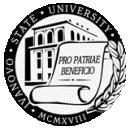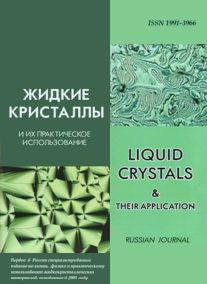|

|
Liquid Crystals and their Application
Russian Journal Zhidkie kristally i ikh prakticheskoe ispol'zovanie Жидкие кристаллы и их практическое использование |

|
|

|

|
|
|
Menu

|
|
|
|
|
Zhidk. krist. ikh prakt. ispol'z. = Liq. Cryst. and their Appl., 2016, 16 (1), 90—96.
DOI: 10.18083/LCAppl.2016.1.90 |

|
|
Influence of Carbon Nanotubes on Surfactants Supramolecular Structures
|
O. S. Zueva1, V. V. Salnikov2,3, Yu. N. Osin2, Yu. F. Zuev3
|
Author affiliations
1Kazan State Power Engineering University,
51 Krasnoselskaya St., Kazan, 420066, Russia
E-mail: yufzuev@mail.ru
2Kazan (Volga region) Federal University,
18 Kremlevskaya St., Kazan, 420000, Russia
3Kazan Institute of Biochemistry and Biophysics Kazan Scientific Center of the Russian Academy of Sciences,
2/31 Lobachevsky St., Kazan, 420111, Russia
|
|
Abstract
The surfactant-base membrane mimetic supramolecular structures and their reaction on the presence of carbon nanotubes were studied. On an example of cetyltrimethylammonium bromide (CTAB) it was shown that CTAB molecules can form structures which in texture, shape and sizes imitate the morphology of biological membranes, – the sheets with a typical size of several tens of micrometers. It has been established that the presence of carbon nanotubes leads both to the change in the characteristic size of the sheets in the direction of their increase, and the appearance of new structural state – the sheets which form the "flower structures" (nanoflowers). This means that the presence of the carbon nanoparticles may change the geometry of the membrane structure, thereby altering membrane properties and thus causing disturbances in the activity of biological organisms.
Keywords: carbon nanotubes, surfactants, membrane structures
|
|
|
|
|
|




